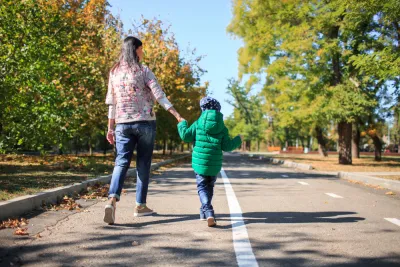Cities are economically diverse and require accessible health care systems, but this can be challenging to implement. Urban developers are working alongside health professionals to create affordable care for city residents.

Urban developers and planners are working alongside health professionals to create affordable care for city residents. Cities are economically diverse and require accessible health care systems, but this can be challenging to implement. Professionals are identifying links between health and urban development to come up with sustainable solutions.
Urban regions struggle with obesity, infectious diseases, climate change, gun violence, and minimal care access. Community developers and health care workers hope to improve society’s well-being while reducing the cost of care. Developers can minimize these health issues by using strategic planning methods.
The Social Elements of Health
The first step for community developers in planning structural advancements is evaluating the social elements of health. Economic stability is one of the most significant influences on one’s health and well-being. In the United States, nearly one in 10 people experience poverty. They struggle to pay medical and health insurance bills without sufficient funds.
The environment also impacts public health. Many cities have high air pollution levels, which increases residents’ risk of respiratory illnesses. Urban transportation sectors also affect individuals’ health and well-being. Residents who live far from bus stops or train stations may struggle to access medical care.
Using Bottom-up Tactics
Planners are targeting the social determinants of health with bottom-up development tactics. One of the first steps to developing care-compatible infrastructure is creating affordable housing. Stable residential environments can reduce morbidity rates. Developers should also design homes with proper ventilation to minimize the spread of airborne diseases.
Planners can also improve residents’ health and well-being by creating a clean and efficient transportation system. More than 18 percent of U.S. citizens live 10 miles or more from a hospital. Improving their access to care facilities can reduce health issues.
More walking and biking paths throughout cities could also improve residents' health. Access to parks and trails can reduce people’s risk of diabetes, cancer, heart disease, stroke, and mental health complications. They may also help individuals travel to appointments and errands safely and efficiently.
Advancing Supportive Technologies
Health care workers can improve care in high-volume facilities using automated technologies. Urban hospitals and medical centers experienced staffing limitations during the COVID-19 pandemic, with many patients experiencing care limitations as a result, which decreased regional health and well-being. Adding automated technologies to medical facilities can increase data entry efficiencies. It also may lower staff members’ burnout.
City developers can also include smart technology in medical transportation planning. These systems can improve emergency response times by autonomously closing roads and changing lights to slow traffic when needed, allowing emergency response vehicles to reach individuals quickly.
Using drones to assess situations before approaching people needing help can assist emergency response personnel in assessing and planning for situations ahead of time. These craft autonomously distribute images to response professionals in real-time so they can prepare for their arrival and develop a strategic response plan. Showing up prepared may improve professionals’ abilities to assist patients.
The Benefits of Combining Health Care and Community Development
Combining health care and community development significantly benefits urban regions. Community members experience less mental and emotional stress with adequate access to housing, health care, and vital resources. Decreasing economic divisions also minimizes social distress like racism and sexism. Overall, increasing urban residents’ access to health care significantly improves their quality of life.

National Parks Layoffs Will Cause Communities to Lose Billions
Thousands of essential park workers were laid off this week, just before the busy spring break season.

Retro-silient?: America’s First “Eco-burb,” The Woodlands Turns 50
A master-planned community north of Houston offers lessons on green infrastructure and resilient design, but falls short of its founder’s lofty affordability and walkability goals.

Delivering for America Plan Will Downgrade Mail Service in at Least 49.5 Percent of Zip Codes
Republican and Democrat lawmakers criticize the plan for its disproportionate negative impact on rural communities.

Test News Post 1
This is a summary

Test News Headline 46
Test for the image on the front page.

Balancing Bombs and Butterflies: How the National Guard Protects a Rare Species
The National Guard at Fort Indiantown Gap uses GIS technology and land management strategies to balance military training with conservation efforts, ensuring the survival of the rare eastern regal fritillary butterfly.
Urban Design for Planners 1: Software Tools
This six-course series explores essential urban design concepts using open source software and equips planners with the tools they need to participate fully in the urban design process.
Planning for Universal Design
Learn the tools for implementing Universal Design in planning regulations.
EMC Planning Group, Inc.
Planetizen
Planetizen
Mpact (formerly Rail~Volution)
Great Falls Development Authority, Inc.
HUDs Office of Policy Development and Research
NYU Wagner Graduate School of Public Service



























